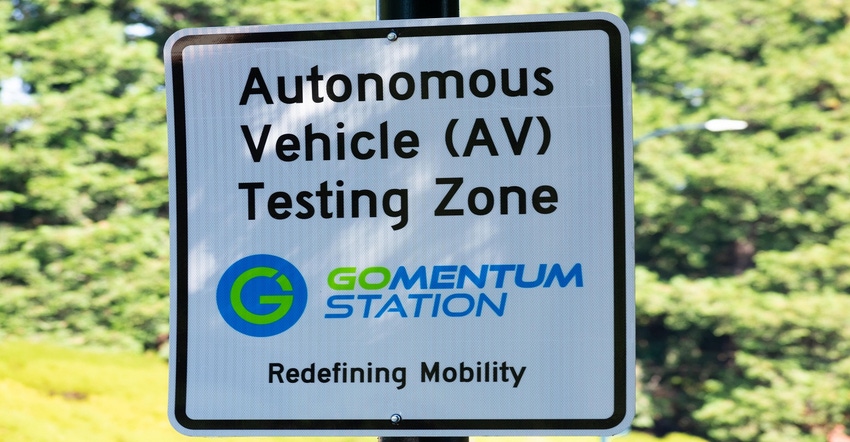Autonomous vehicle companies are promoting the ASA Motion Link, a SerDes communication technology for in-vehicle connectivity.
April 7, 2022

Suzanne Deffree, Group Event Director, DesignCon
An uptick in self-automated vehicles has become more mainstream over the past couple of years. From government-issued vehicles to hands-free drives to work, more people and organizations are expecting to rely on self-automated vehicles in the next few years.
Ajeya Gupta, a Research Engineer in the Advanced Networking Systems Group at Ford Motor Company, and Kirsten Matheus, the strategist of in-vehicle communication technologies at BMW in Munich, Germany, have worked to bring the self-automated vehicle to a certain standard as companies prepare for more self-automated vehicles to become mainstream. The Automotive SerDes Alliance, a non-profit industry alliance of automotive technology providers, is promoting the “ASA Motion Link,” a SerDes communication technology for in-vehicle connectivity ranging from two Gbps to 16/48 Gbps line rate.
DesignCon, which took place this week from April 5 through 7 at the Santa Clara Convention Center, serves as the nation's largest event for chip, board, and systems design engineers and displayed the important impact self-automotive vehicles are making in today’s world, along with what to expect from the most innovative technologies in this industry.
I had the pleasure of speaking with Ajeya and Kirsten, both prominent speakers at Drive World Conference at DesignCon, about the latest advancements in autonomous vehicle technology and their sessions at the event.
Suzanne Deffree: Could you tell us about the new standardization of Automotive SerDes Alliance?
Ajeya Gupta: There is a need for the industry to use a common communication protocol for in-vehicle use cases. Automotive SerDes Alliance (ASA) aims to bridge this gap by developing an industry-standard based networking solution for in-vehicle applications such as cameras, infotainments, Advanced Driver Assist Technologies (ADAS), etc. ASA now includes members from an automotive ecosystem of 90-plus automakers, Tier 1, semiconductor suppliers, component suppliers, and test houses.
Kirsten Matheus: The Automotive SerDes Alliance is home to the ASA Motion Link technology, which provides cost and power-optimized, asymmetric high-speed communication as needed for in-vehicle camera, sensor and display applications.
Suzanne Deffree: What challenges are you solving with this technology?
Ajeya Gupta: The wide use of proprietary solutions to transport high bandwidth data has become an industry challenge. This is quickly becoming a bottleneck as the sophisticated use cases continue to grow. This is attributed to higher switching costs, a significant uptick in non-recurrent engineering (NRE), unintended vendor lock-in, etc. ASA was formed with the vision to address these shortcomings and solve them by creating a standardized solution.
Kirsten Matheus: Currently, car manufacturers must use vendor-specific proprietary technologies to transmit high-speed video data inside cars. This limits each deployment to vendor-specific capabilities (with potential vendor lock-ins). A standard allows for a large product portfolio with cost and power-optimized products.
Suzanne Deffree: You spoke at DesignCon. What insights did you share with attendees?
Ajeya Gupta: We were invited to be part of the panel focused on the next generation of automotive communication technologies and associated testing challenges. The panelists bring a diverse backgrounds ranging from carmakers, Tier 1 suppliers, chip vendors, and global representation. The audience has an opportunity to learn about the unique set of challenges encountered by each tier within the automotive ecosystem when it comes to supporting futuristic use cases for self-driving cars, enhanced in-vehicle infotainment experience, etc.
Kirsten Matheus: If you have ever wondered why some technologies succeed and others, technically equally performant or even better, fail, the interactive session on the “Role of Open Standards for the Long-term Sustainability of Network Technologies” might provide you with answers. If you want to learn about new communication technologies, such as the ASA Motion Link and the importance and role of testing these communication technologies in cars, the panel discussion “Test and Measurement for Automotive Standards” is right.
Suzanne Deffree: What excites you about engaging with your community in person at DesignCon?
Ajeya Gupta: Access to a wide range of technical talks, panels, and convergence of the electrical industry peers under the same roof is both exciting, as well as an excellent learning opportunity. Learning about the development in other industries such as semiconductor and hardware development looks particularly interesting, and the hope is to apply these in automotive systems, as well.
Kirsten Matheus: To move the world forward, you need a good understanding of the problems to solve and the technical solution space available, which will be available soon. Meeting people face-to-face is the only way to get a hook on both.
Register for DesignCon 2022 here to attend sessions in its online platform June 7-8, 2022.
You May Also Like



